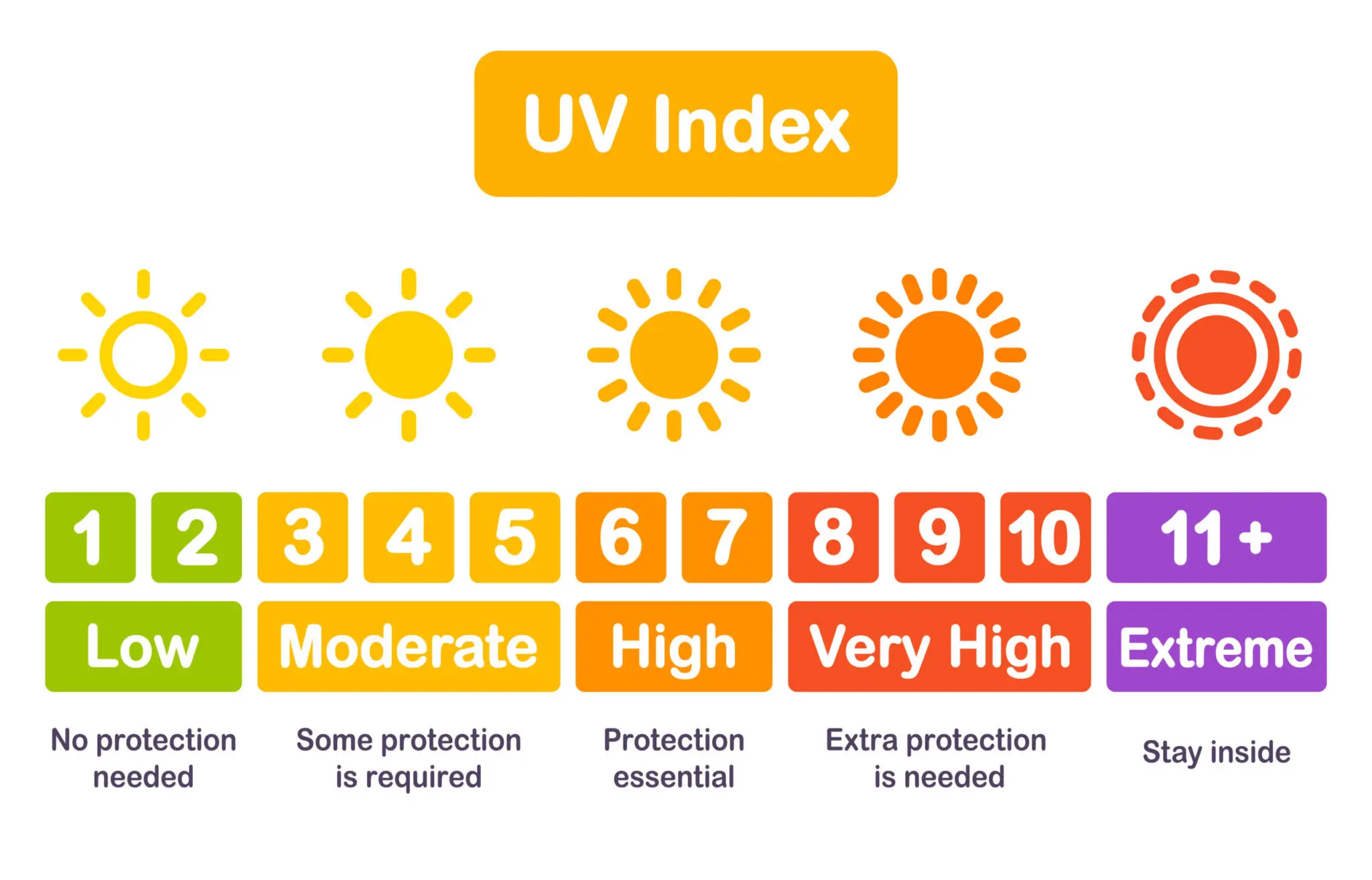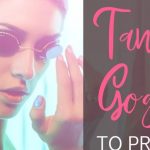With summer just around the corner, it’s time to get ready to tan your skin! But before you grab your sunscreen and head to the beach, you may be wondering what the best UV index is for tanning. Many people believe that the higher the UV index, the better the tan, but this isn’t necessarily true. In this article, we’ll explore the best UV index to tan in, as well as the risks associated with tanning. So, if you’re ready to get the perfect tan this summer, read on to learn more!
The best UV index to tan in is around 3-5. When the UV index is between 3-5, you will get a nice, gradual tan without overexposing your skin to the sun. To determine the UV index, check the daily UV index forecast or download an app that can provide you with the UV index in your area.

Contents
What is the best UV Index to Tan?
The UV Index is a numerical measure of the amount of ultraviolet light reaching the earth’s surface. It provides an indication of the UV radiation levels people are exposed to and can be used to plan outdoor activities. The higher the UV Index, the more severe the threat of sunburn and other skin damage. Tanning is an activity that involves exposing the skin to the sun’s ultraviolet (UV) rays. Knowing the best UV Index to tan in is important for people who want to get a tan without damaging their skin.
The ideal UV index for tanning will vary depending on the individual and their skin type. People with light skin should tan at a lower UV index than those with darker skin. The best UV Index for tanning for those with light skin is between 3 and 5, while those with darker skin can tan at a higher UV index of 6 or 7.
It is important to remember that the UV Index is an indication of the amount of UV radiation present and not the amount that is absorbed by the skin. It is possible to get a tan at any UV Index, but it is important to take precautions to protect the skin from sunburn and other damage.
Using Sunscreen
Sunscreen is an important tool for protecting the skin from sunburn and other damage caused by UV radiation. It is always a good idea to use sunscreen when tanning, regardless of the UV Index. Sunscreen should be applied liberally and evenly to the skin and should be reapplied every two hours or more often if the person is swimming or sweating. The SPF (sun protection factor) of the sunscreen should be chosen based on the UV Index and the person’s skin type.
For those tanning at a UV Index of 3-5, a sunscreen with an SPF of 15-30 is recommended. For those tanning at a UV Index of 6-7, an SPF of 30-50 is recommended. It is also important to remember to wear protective clothing, such as a hat and sunglasses, when tanning.
Timing Tanning Sessions
It is important to be aware of the time of day when planning a tanning session. The sun’s UV radiation is strongest between 10am and 4pm, so it is best to avoid tanning during these hours. Tanning during the early morning or late afternoon is a safer option, as the UV radiation is not as intense.
It is also important to limit the amount of time spent in the sun. People with light skin should limit their exposure to between 15 and 30 minutes, while those with darker skin can stay in the sun for up to 1 hour. tanning for longer than this can increase the risk of sunburn and other skin damage.
Monitoring Skin Color
The best way to ensure that a person is not overexposed to UV radiation is to monitor their skin color. This can be done by comparing the skin color to a color chart that indicates the level of UV radiation absorbed by the skin. If the skin color matches or exceeds the color on the chart, the person should stop tanning and seek shade.
It is important to remember to stay hydrated while tanning, as dehydration can increase the risk of sunburn and other skin damage. Drinking plenty of water helps to keep the skin moisturized and reduce the risk of sunburn.
Taking Breaks
It is important to take regular breaks when tanning to avoid overexposure to UV radiation. Taking a break every 20 minutes or so will help to reduce the risk of sunburn and other skin damage. During the breaks, it is a good idea to take a cool shower or bath to cool down and rehydrate the skin.
Conclusion
Knowing the best UV Index to tan in is important for those who want to get a tan without damaging their skin. The ideal UV Index for tanning will vary depending on the individual and their skin type, but generally those with light skin should tan at a lower UV Index than those with darker skin. It is also important to use sunscreen, limit the amount of time spent in the sun, monitor skin color, and take regular breaks when tanning.
Few Frequently Asked Questions
What is a UV Index?
A UV Index is a measure of the strength of ultraviolet (UV) radiation from the sun. It is used to determine the level of protection needed to protect the skin from the effects of the sun’s rays. The index is based on a scale from 0-10, with 0 being the lowest and 10 being the highest. The higher the index, the greater the risk of skin damage from UV exposure.
What is Tanning?
Tanning is the process of exposing the skin to UV radiation from the sun or artificial sources, such as tanning beds. This process causes the skin to produce more melanin, which is a pigment that helps protect the skin from the sun. The result is a tanned, or bronzed, appearance.
What is the Best UV Index to Tan In?
The best UV index to tan in is between 3-5. At this level, the UV radiation is strong enough to cause the skin to produce more melanin, but not so strong that it causes skin damage. It is important to remember that even at this level, it is important to wear sunscreen to protect the skin from sunburn and other damage.
What are the Risks of Tanning?
The risks of tanning include sunburn, skin cancer, premature aging, and eye damage. Tanning in a tanning bed increases the risk of skin cancer, since the UV rays are much stronger than the sun’s rays. It is important to wear sunscreen when tanning and to limit exposure to the sun or tanning beds.
What are the Benefits of Tanning?
The benefits of tanning include a darker skin tone, improved appearance, and improved self-esteem. Tanning can also help to reduce the risk of skin cancer when done in moderation.
What are Some Tips for Tanning Safely?
Some tips for tanning safely include wearing sunscreen, limiting exposure to the sun or tanning beds, and avoiding tanning during the hottest part of the day. It is also important to drink plenty of water to stay hydrated and wear protective clothing when outdoors. Additionally, it is important to take regular breaks from tanning to allow the skin to rest and heal.
What is the best UV index for tanning?
No matter what UV index you choose to tan in, it is important to take proper precautions to protect your skin from the sun. Always wear sunscreen, reapply as necessary, and wear protective clothing when spending time outdoors. By being aware of the UV index and taking the necessary precautions, you can enjoy the outdoors with peace of mind and a beautiful tan.








